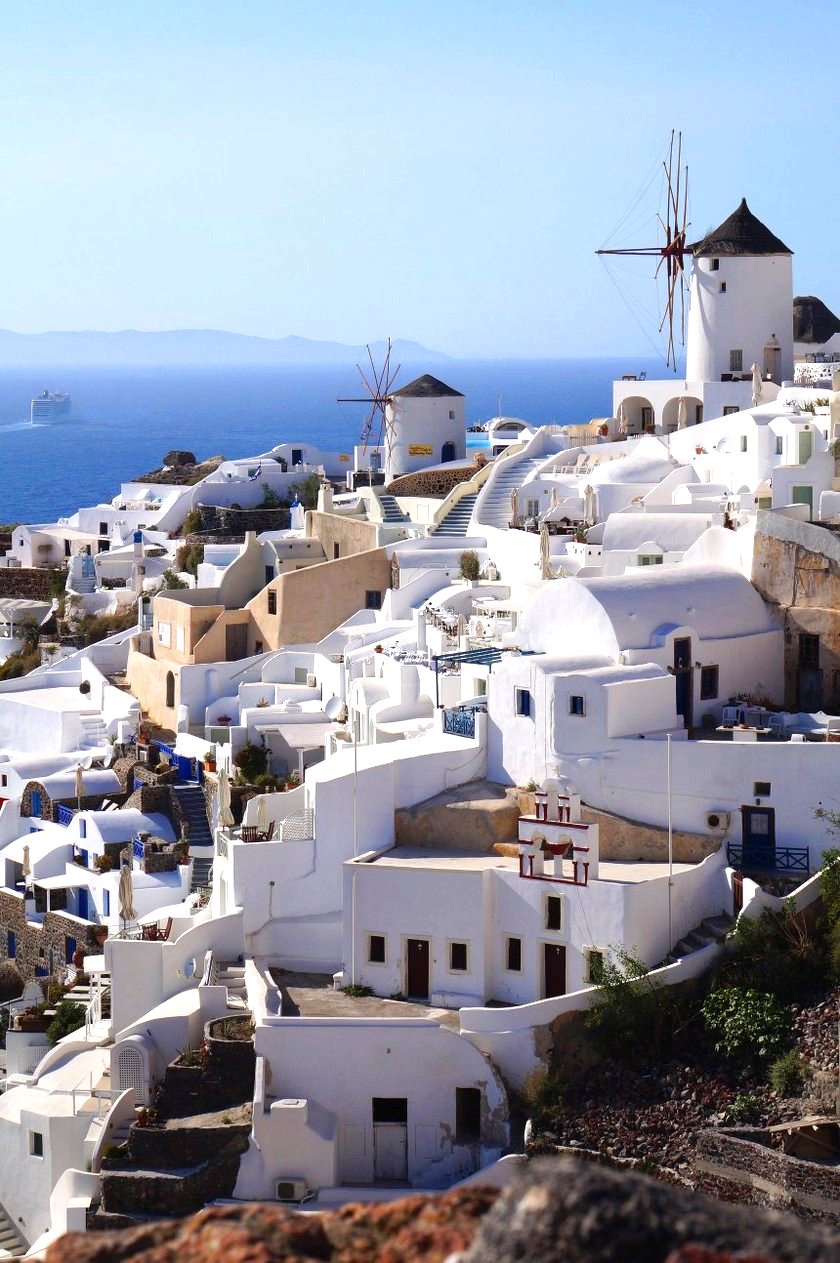
A land of endless historical riches, Greece is a feast for the inquisitive traveler. History and the legends of myth permeate every inch of this small, mountainous country of around 11 million people. The legacies of various civilizations have written the story of Greece over many centuries. It’s impossible to see it all in one trip, but Greece’s charms will surely tempt you to return.
I began my trip in the capital Athens, a city of around 4 million, which makes it home to nearly one quarter of all Greeks. I only had a couple of days in Athens, which was a shame because I enjoyed it and could have used more time to explore. I did, however, have enough time to see the main sites, do some interesting souvenir shopping, and, of course, find some vegan-friendly food.
Greek food can be very vegan-friendly since the cuisine features an abundance of veggies, grains, and beans. And as an olive oil fanatic, I can tell you that there is some delicious olive here and it is used liberally. But there are some pitfalls like cheese, butter, and eggs to watch out for. I’ve listed some meal descriptions below, but first I’ll list some of my must-sees for a short visit to Athens.
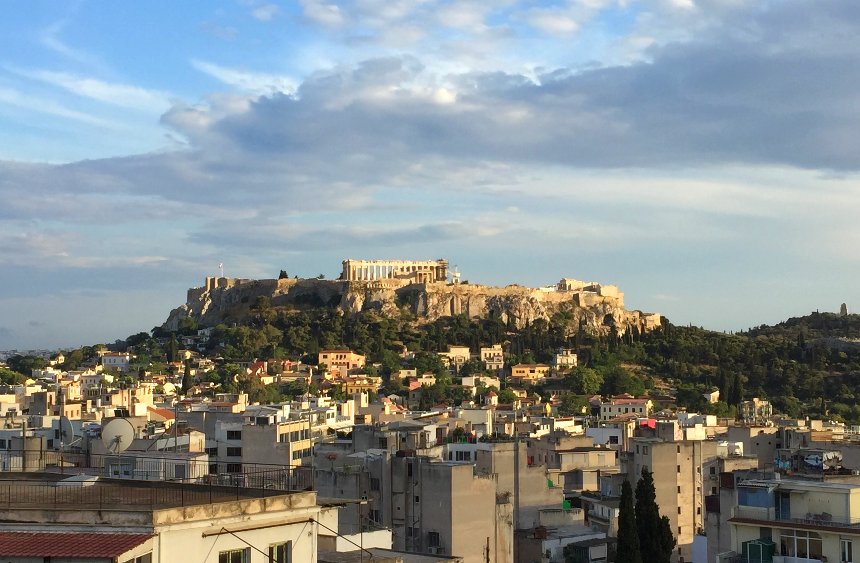
Athens is a large, sprawling city but I found it to be a walkable and friendly. Even if your hotel is not near the main tourist areas, you are always a short, efficient metro ride away from all of the sites.
One cannot talk about the sites of Athens, however, without first mentioning the Acropolis, the large hill in the middle of city with the Parthenon, a temple dedicated to the patron goddess Athena, perched atop it. This eminent symbol of the city, and maybe even Greece as a whole, is a must, not just for its historical context and grandeur but also for the sweeping views of the city that it affords. From here you can see the urban sprawl of Athens, Lycabettus Hill, and even the seaport of Piraeus. The line to enter the Acropolis can be very long during midday, so arrive either early in the morning or later in the afternoon to beat the crowds.
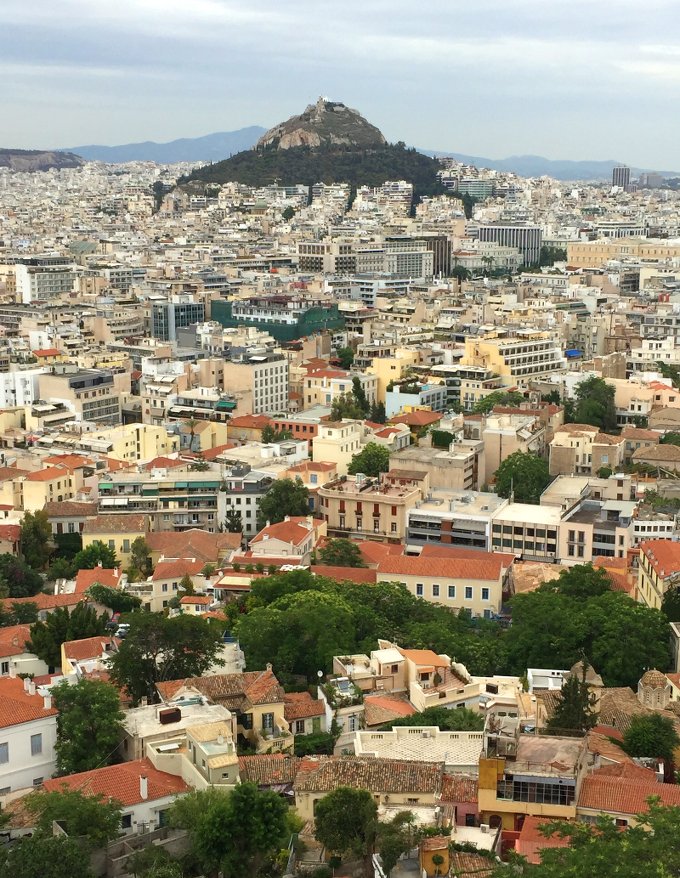
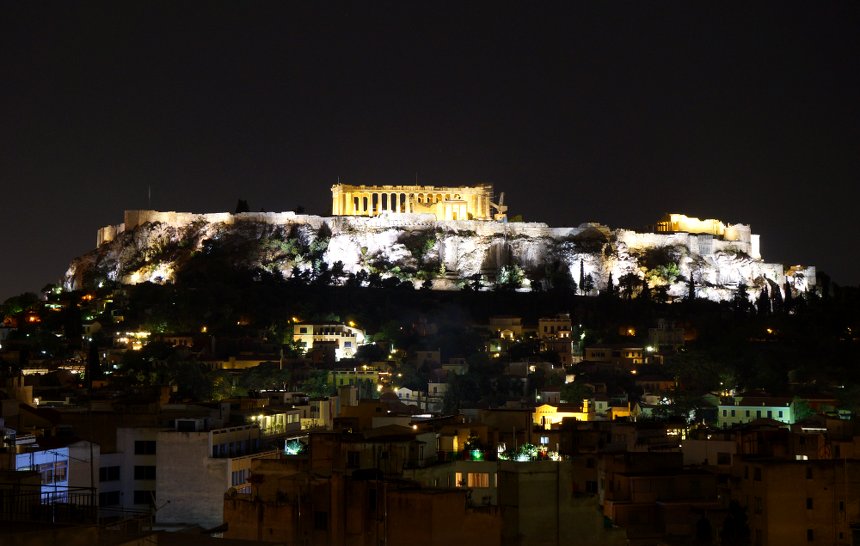
Going toward or coming back from the Acropolis, you can stroll through the Agora, the ancient marketplace of Athens lined with promenades and dotted with historical sites.
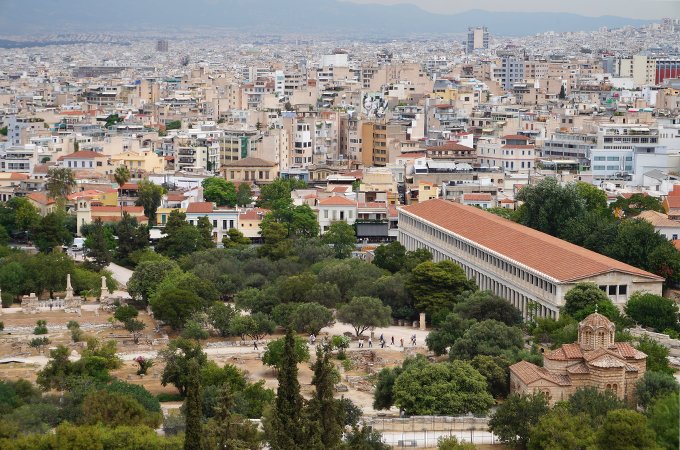
You’ll soon find yourself at Monastiraki, a main square and metro station in the city. From here, as you head toward the site of the Greek Parliament known as Syntagma Square, you will reach my favorite area, the very walkable Plaka. This jumble of serpentine streets houses many nice shops, restaurants, and cafes and is a quintessential Athens experience. There are some nice ceramic and embroidery souvenirs to buy here but my favorite were the carved olive wood kitchen bowls, utensils, and figurines. I really love the hardness and gnarled grain of olive wood.
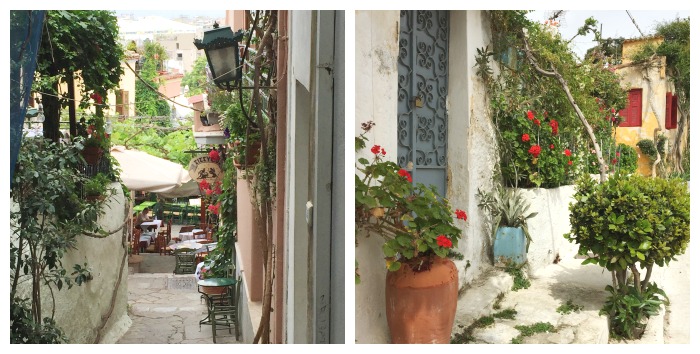
Head back up to Syntagma Square and catch the changing of the guard (every hour) and check out a store called Mastiha Shop. Located just north of the square, this small store sells everything to do with mastic, the famous resin from a certain tree grown on the Greek island of Chios. These dried drops of resin, also called mastic tears, are used in Greek desserts to impart a very unique, pine-like flavor. They are also used extensively in Middle Eastern cuisine and they are one of my favorite flavorings in desserts. For me, no Middle Eastern rice pudding recipe would be complete without a little mastic. In addition to the dried resin tears, they also sell gums, jams, liqueurs, soaps, and cosmetics made from this unique ingredent. Needless to say, I probably bought a decade’s supply of mastic! 😀
As I mentioned, I only had two days in Athens, but I did manage to check out a couple veggie restaurants that I can recommend for the vegan traveler.
The first one is Mama Tierra, a vegetarian restaurant with a mostly vegan menu. Just a short walk from the Omonia metro station, this cozy place serves some nice Greek/Eastern Mediterranean dishes. The service is friendly and the servings are generous. I had a tasty salad that had a creamy cashew dressing, roasted mushrooms, and croutons. Since I love leeks, I had to try the leek fritters. They were well seasoned with typical herbs like dill and oregano but were a little chewy and oily. I still enjoyed the taste, though. For my entree, I ordered the vegetable paella, which was fantastic. The rice was well seasoned and it had lots of nice veggies in it. The taste reminded me of a classic Jordanian rice dish called maqlooba, a favorite of mine. To drink, I enjoyed a ginger hibiscus kombucha and for dessert the very friendly chef brought out a sample of his housemade carrot preserves. They were similar to the pumpkin preserves made in Greece and the Middle East, only these were made with carrot…brilliant!
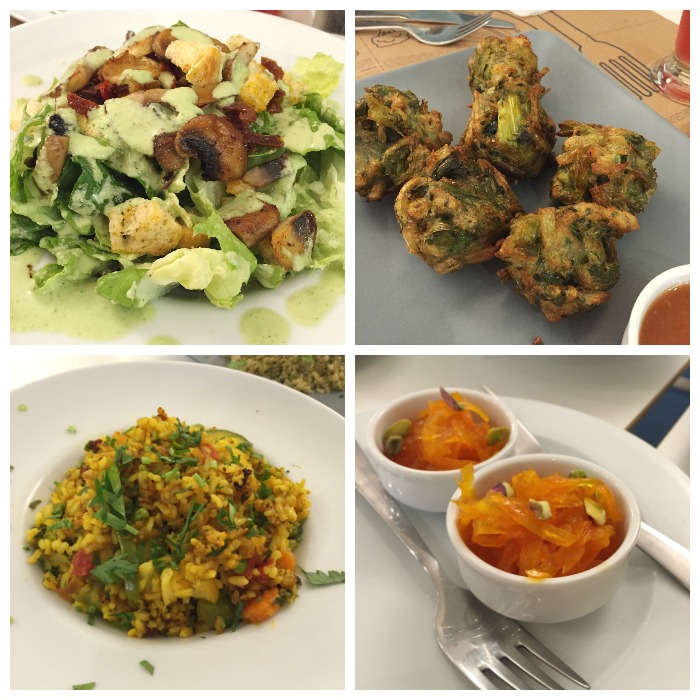
Another great place to check out is Avocado, another vegetarian restaurant with plenty of vegan options. This one is located right in the Plaka neighborhood, just a few blocks from Syntagma Square. They serve Mediterranean dishes with Eastern inspirations. My appetizer was a delectable spinach pie topped with almonds and walnuts. This was so simple but delicious…highly recommended! And for my entree I ordered a fusion dish called Luminous Vegan which combines rice, mushrooms, avocado, tamari, snow peas, and cilantro. This too was very good. They also have fresh juices (I went for the Go Green). Service was very friendly. There was a small miscommunication with the order but they fixed everything quickly and graciously. Definitely check this place out for lunch or dinner while you are strolling around the Plaka.
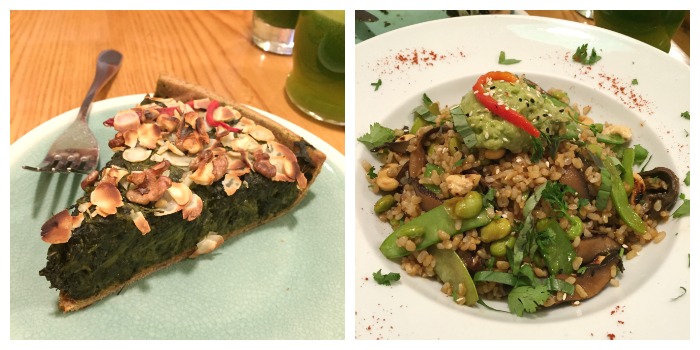
Before heading to my ultimate destination which was the picturesque island of Santorini, I first made a detour to the site of Meteora in central Greece. I had heard about and seen photos of the famous cliffside monasteries of Meteora, so I knew I didn’t want to miss it on my trip to Greece. I’m so glad I went because the scenery really is breathtaking.
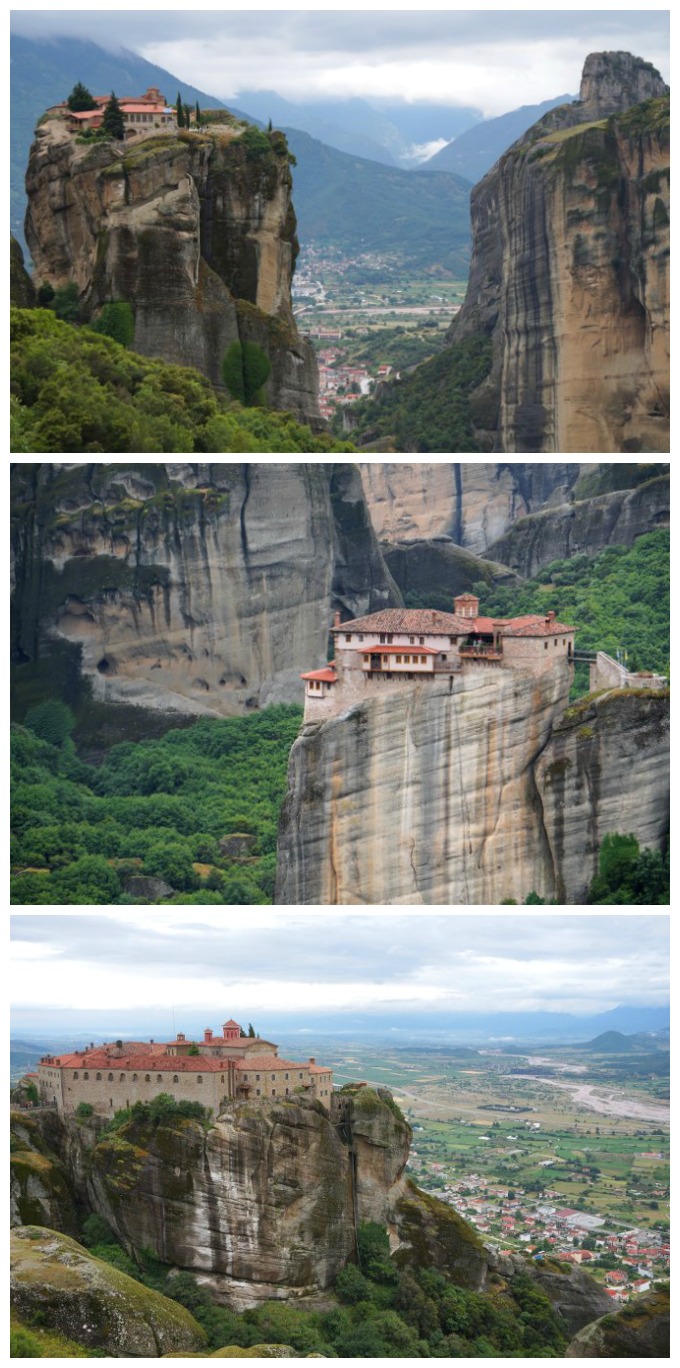
These churches were built atop these pillar-like sandstone rock formations in the 14th century, but evidence suggests that communities of monks have inhabited these rocks since the 9th century. Many monasteries were built in the past but today only six remain intact. The churches hold many colorful Eastern Orthodox frescos and icons and the views to the surrounding monasteries and rock spires are spectacular.
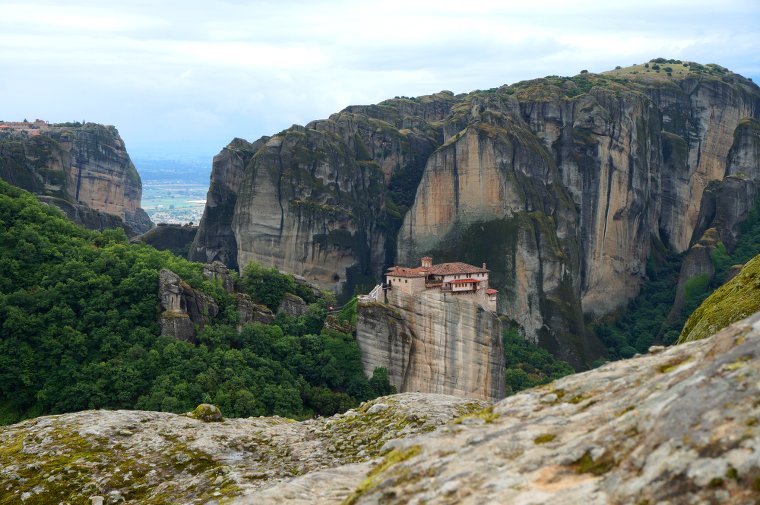
If you can make time to visit Meteora, I would recommend it. To get there from Athens, you have a few options. You can take a public bus or a train or you can book an organized two day bus tour. Normally my adventurous, independent spirit would shy away from taking such a tour but I’m actually glad that I choose this option. The problem with the bus or the train is that it limits you. There are only a few departures per day, so you are locked into the train schedule and I don’t like to waste precious travel time.
Whereas with the organized tour, they pick you up from your hotel and make the 5 hour journey to Meteora with rest stops in between. You spend a night in Meteora, and then they bring you back to wherever you want in Athens. Sure, you have to deal with some interesting tourists on the bus, but I think that’s worth not having to carry your luggage with you everywhere as you make all your transfers and hiring taxis to take you to the different monasteries. Ok, enough logistics, back to Meteora!
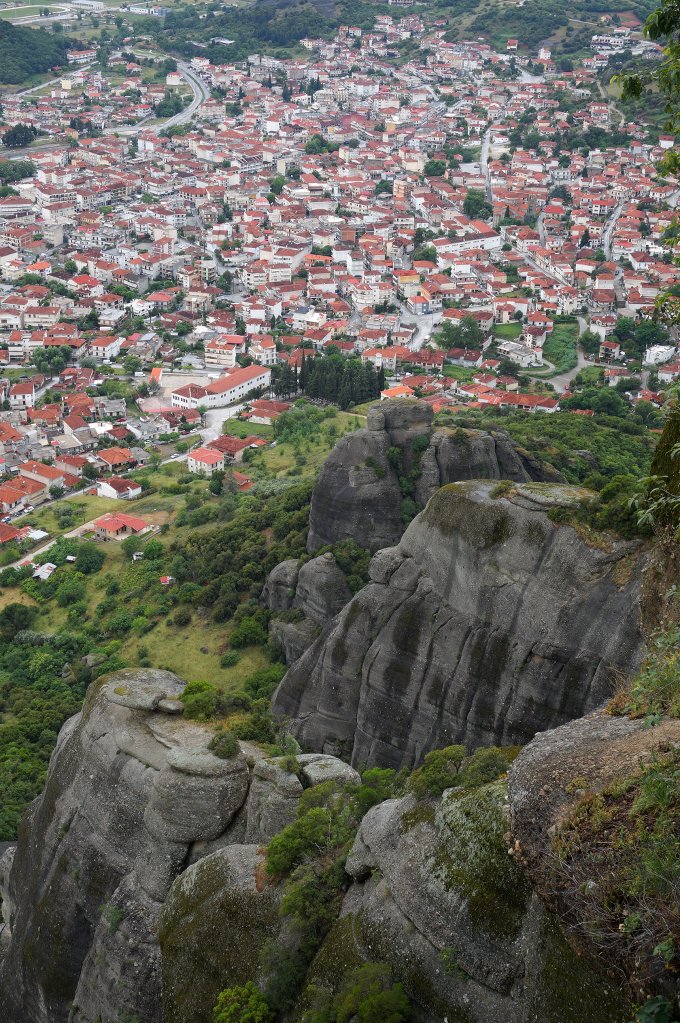
The town at the foot of the Meteora monoliths is called Kalambaka and it’s a small town without must-see sites, but it is nice to stroll around. There are no vegetarian or vegan restaurants nearby, but one place at which you can find some options is called Meteora Restaurant. I went there for dinner for the one night I stayed in town and had a filling meal. I had the delicious Meteora salad which featured mixed greens, apples, dried fruits, sesame, and strawberries. There weren’t any vegan entrees but the truly friendly server suggested that I get a few appetizer/side dishes. I ordered the stewed vegetables which was eggplants, peppers, tomatoes, and more cooked in a lemony olive oil sauce. I also got the potatoes which were stewed in olive oil, oregano, and turmeric. Both were very filling.
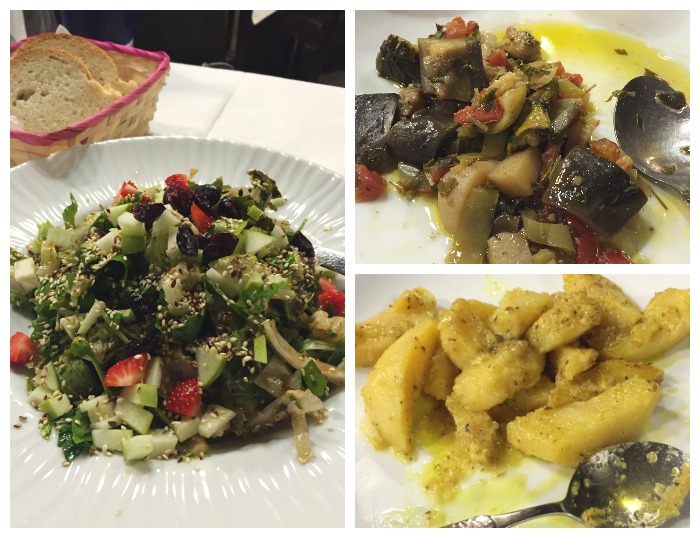
Another great thing about the two day bus tour to Meteora is that it includes a stop at Delphi, another site I can now check off my bucket list!
This historical site, famous because of the so called Oracle of Delphi, was a magnet for those seeking guidance and good fortunes in ancient Greece. As the legend states, the high priestess of Delphi, Pythia, would inhale hallucinogenic vapors emitted from cracks in the rocks around the Temple of Apollo and would give unintelligible answers which priests would then interpret to those seeking her guidance. People from all over Greece came to consult the Oracle and some historians believe that because the site was such an institution among all levels of society, the priests were thus very well informed about the affairs of the state and were able to give very convincing answers and predictions to the pilgrims.
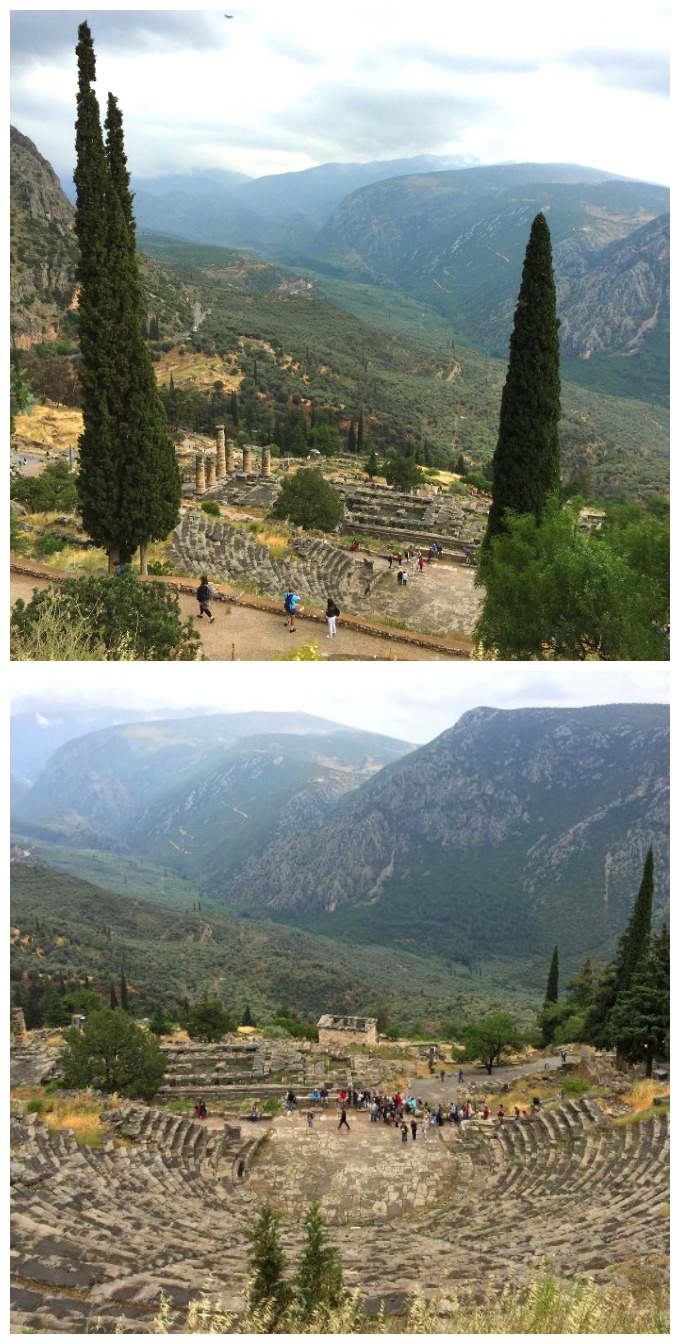
At this point in my trip, I headed to the airport, not to go back home, but to catch a one hour plane ride to the island of Santorini.
Santorini, or Thira as it is locally known, is a volcanic island in the Cyclades island chain in the Aegean Sea. These islands are known for their windswept climate, whitewashed dwellings, windmills, and blue-domed churches. Santorini checks all of these marks and more.
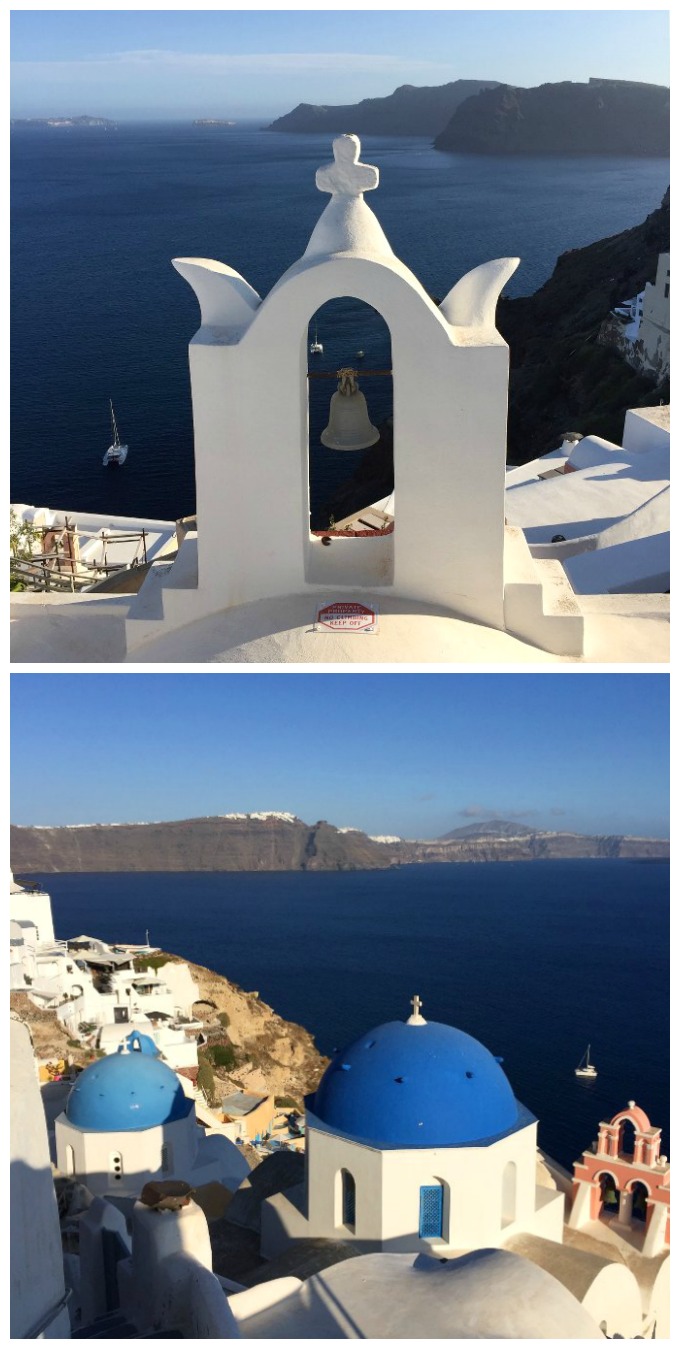
This main island along with smaller surrounding islands are the remains of the caldera formed from an enormous volcanic eruption that took place during the Minoan era. Therefore the western side of Santorini is a sheer cliff down to the sea below whereas the eastern side has a shore that gently slopes into the sea. Most of the restaurants and shops are on the western side but I stayed on the eastern side in a small beach town called Perissa.
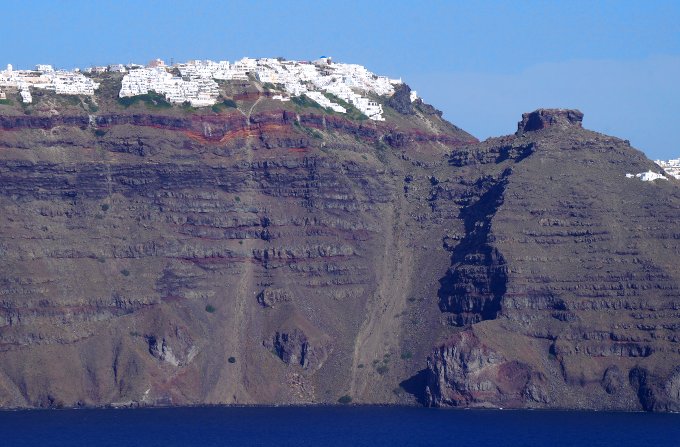
With its volcanic black sand beach and laid-back vibe, Perissa, for me, is preferable to the hustle of the other side of the island. I stayed at the Hotel Zorzis, located along the main road in town, conveniently right next to the bus stop to take you further afield. This lovely little hotel is owned by the charming couple Spiros and Hiroko, and is a very comfortable place to unwind after a long day.
They run this hotel with love and it shows. Spiros was always asking how I was and if I needed anything and Hiroko prepared me an assorted fruit platter in the mornings because she knew I didn’t eat dairy/eggs. Always tending to their guests’ needs, they really are two gentle souls. The first morning I woke up and looked out the balcony into the garden to see Hiroko on a ladder precisely deadheading and pruning each and every flower of a large oleander tree with what looked like manicure scissors! At that moment I knew I had picked the right place to stay at.
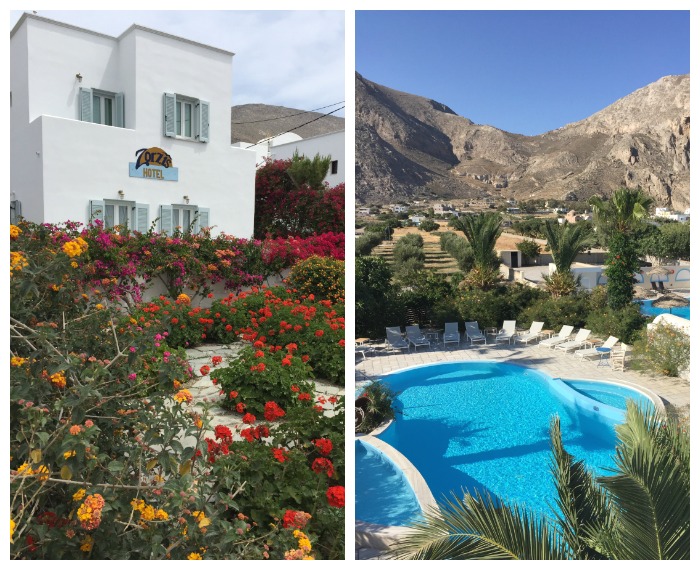
From Perissa you need to take the bus to get to other sites but one town within walking distance is Emporeio. It is full of classic Cycladic architecture and style. I took a walk over, explored all the little side streets, had an excellent cup of Greek coffee, and made my way back to Perissa, stopping at a supermarket to pick up some snacks.
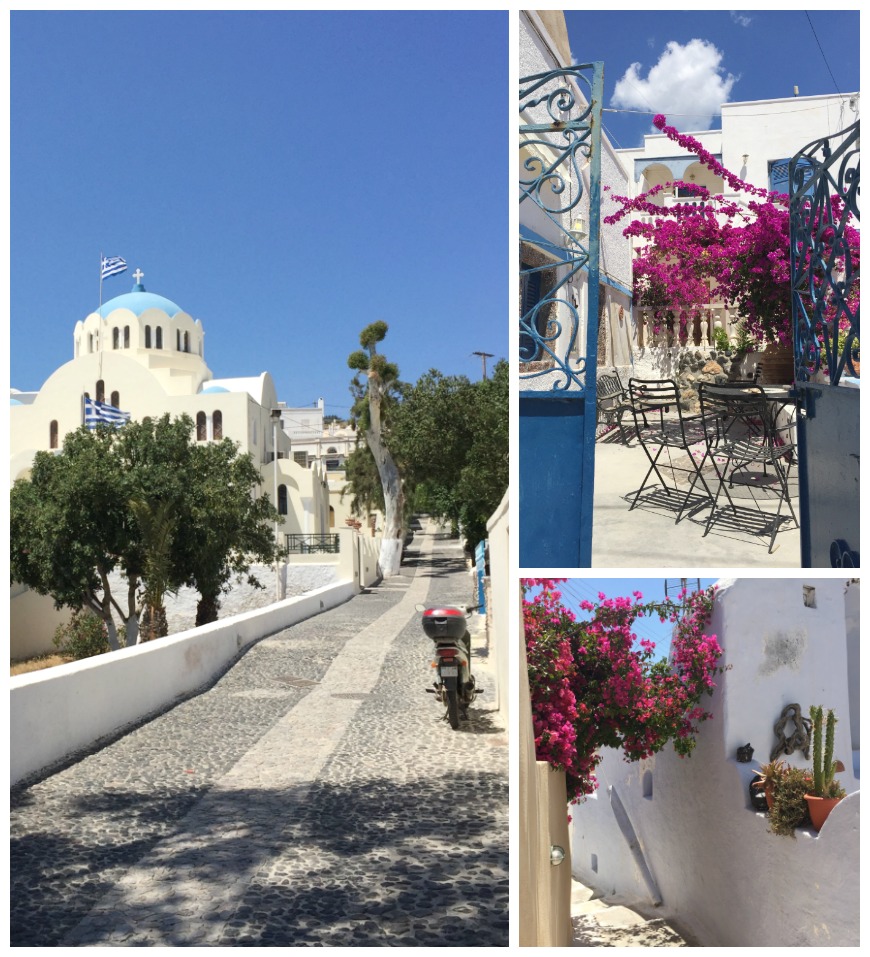
Now it was time to go to the beach, which is only a five minute walk from the hotel. The beach is a coarse black sand, which is nice because it can just be flicked off your skin easily. The downside however is that because of its dark color, it gets extremely hot. Slippers are required! The water was clean and the view of the nearby mountain, the highest on the island, makes a nice backdrop.
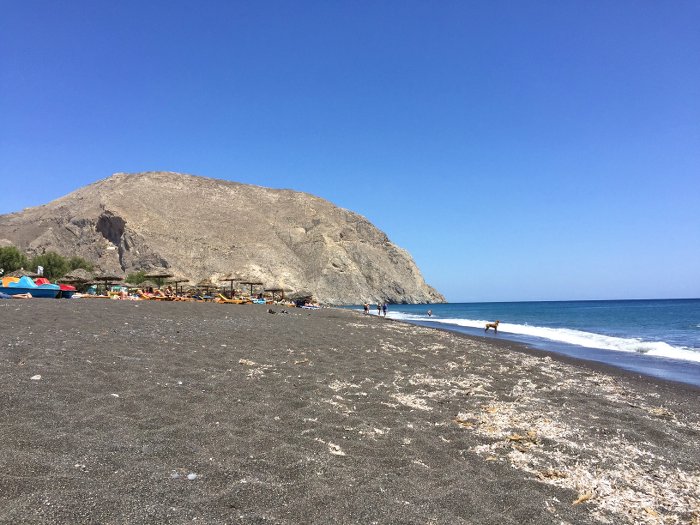
Along the beach road there are numerous restaurants, mostly serving seafood and other nonvegan items. I looked at the menus of almost every place along the road and found one place that had adequate vegan options. Ntomatini is a colorful open air restaurant right on the beach that specializes is meze, or small plate appetizers similar to tapas. These are common in the Middle East and are often vegan by nature. The menu lists the ingredients for each dish but I asked my server just to double check if my selections were vegan. She gladly did and returned with suggestions on what I should order instead of a few nonvegan items. I ended up getting the eggplant salad, fried zucchini, roasted mushrooms, and the fava spread.
The portions were generous and the food was really good. After seeing the menus of all the nearby restaurants, I was afraid I wasn’t going to find anything to eat but the food here was not only adequate, it was also very tasty. Sorry for the picture, I was too busy eating to remember to take a picture first! 🙂
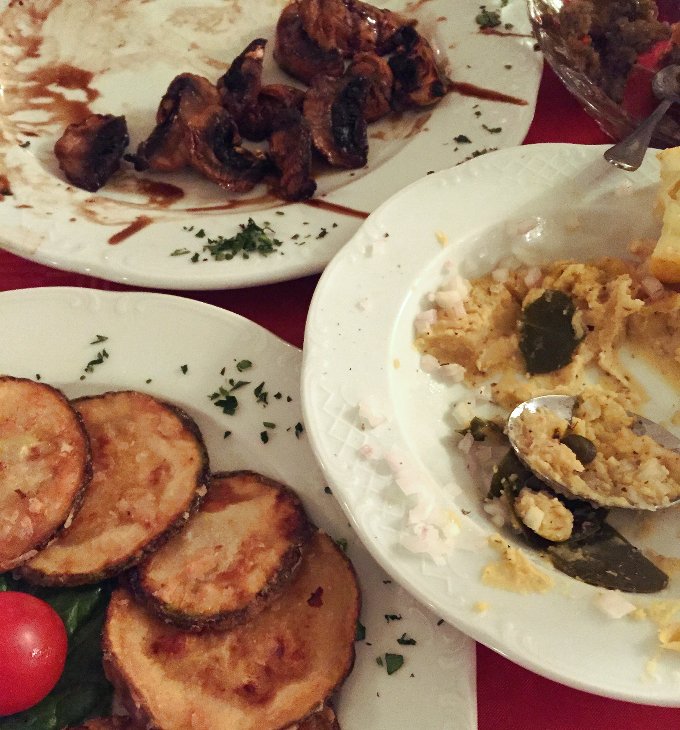
There was another restaurant on the beach right near my hotel called Tranquilo and it actually advertises itself as having vegan options. I went there for lunch one day and found very few vegan options other than salad. The service was also not the friendliest, so I would just skip that place.
Some foods that Santorini is famous for include tomatoes, grapes/wine, zucchinis, and a dish called fava. This yellow spread is a vegan’s best friend in Greece because it is delicious and is found on nearly every menu. You may think it is made with fava beans, the broad green beans with a velvety seed pod. The name fava, however, is a misnomer; it’s actually made using dried yellow split peas / yellow pigeon peas. When cooked down with onion, olive oil, and other aromatics and then blended, these peas turn into a creamy, filling, and protein-rich dish. I ordered it at every meal.
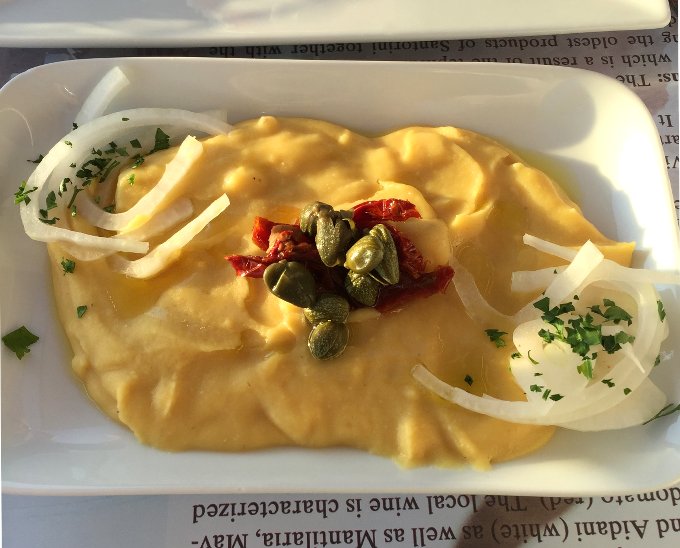
You can talk the bus or arrange a car to take you to nearby Vlichada beach. The water was a bit choppy for swimming here but both the eroded cliff face and the fiery sunset were spectacular. There are a few tavernas at the nearby harbor to have a cup of coffee as the sun sets.

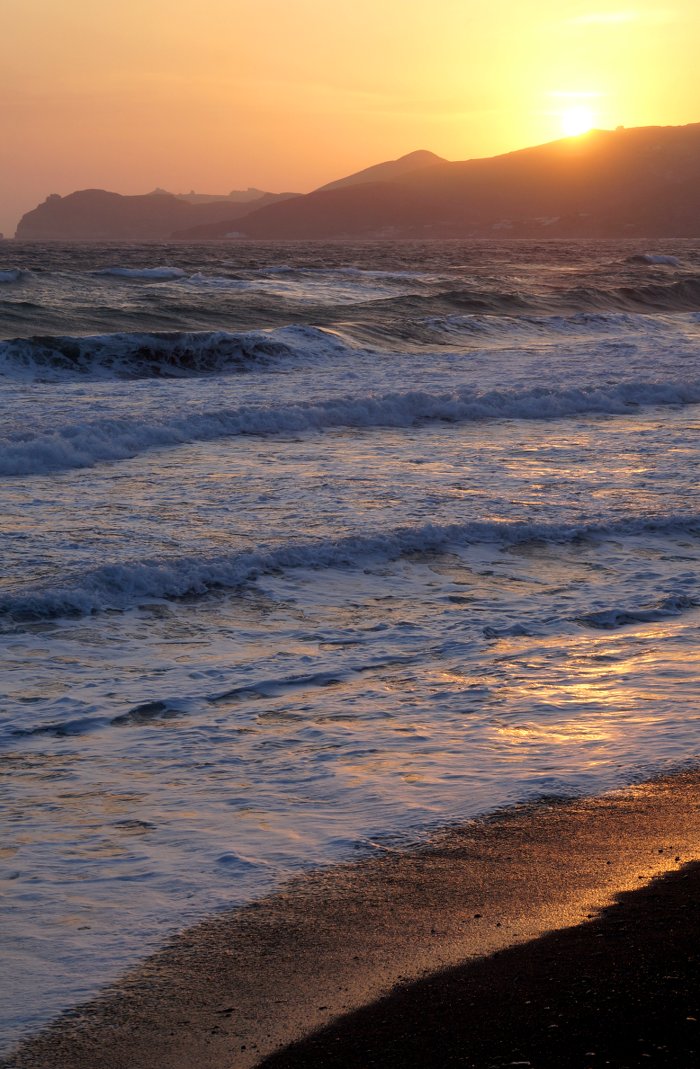
At some point you’ll find yourself in Fira, the largest town on the island. It’s ok, but it’s just a lot of traffic and stores and people. The views are nice but for the best views I recommend the town of Oia, all the way on the northern tip of the island. Sure, there are lots of people and shops in Oia as well, but it feels less jumbled and I think the views of the caldera and nearby islands are far better than Fira.
Walking along the main drag in Oia and looking out at the sea, the environment almost looks other-worldly. The stark blue sea is dotted with drab, gray shards of treeless islands. And meanwhile, all around you is a whimsical hodgepodge of buildings and architecture. It’s what makes Santorini so special and Oia is the best place to take in this picture-perfect experience.

I had never been to Greece before, and this was a trip that I wanted to take for a very long time. My two regrets are that it took me so long to finally travel there and that I didn’t have more time to discover more of the country. They say there are two rules with travel, however: Don’t try to see too much and plan on returning someday. I know I will.
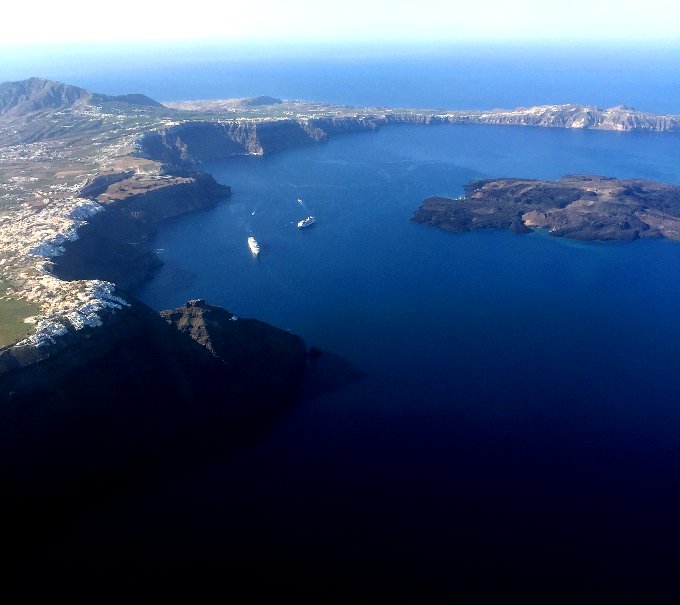
And while the fate of Greece’s economic future may remain unknown, its glorious history remains unchanged. As glistening as the blue Aegean and as golden as the noble olive oil, so too do Greece’s enumerable riches continue to glow.
Have you been to Greece? If so, what were some of your favorite sights and experiences?
Check out this recipe, inspired by my trip: Greek Yellow Split Pea Dip (Fava) !

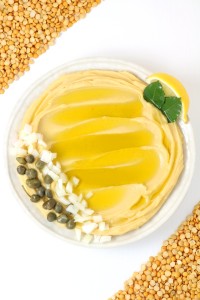

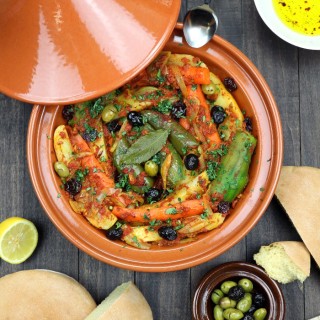




Hey Omar, I loved seeing your gorgeous photos of Greece and hearing about the food! I’d so love to go there! Yellow pigeon peas must be what we call split yellow peas in the UK they’d be perfect in such a dip they’re so smooth, I’m going to try making it sounds so good!
Hi Amy! Thanks so much! It was a great trip. Yes, I think yellow split peas are the same thing…sometimes they are labeled as that here in the US, too. They break down nicely into a creamy dip. In fact, that is the recipe inspired from my trip that I will be posting shortly, haha! 😀
I love Greece. I spent 3 months there back in 2010, before I became vegan. My heart desires a return trip! Great to know where to eat when that time comes. Wonderful pics, thank you! I’m just a big fan of your emails, thanks.
Oh how nice Tiffany. I’d love 3 months in Greece… :D:D Thank you for the encouragement and hope you keep enjoying the blog content!